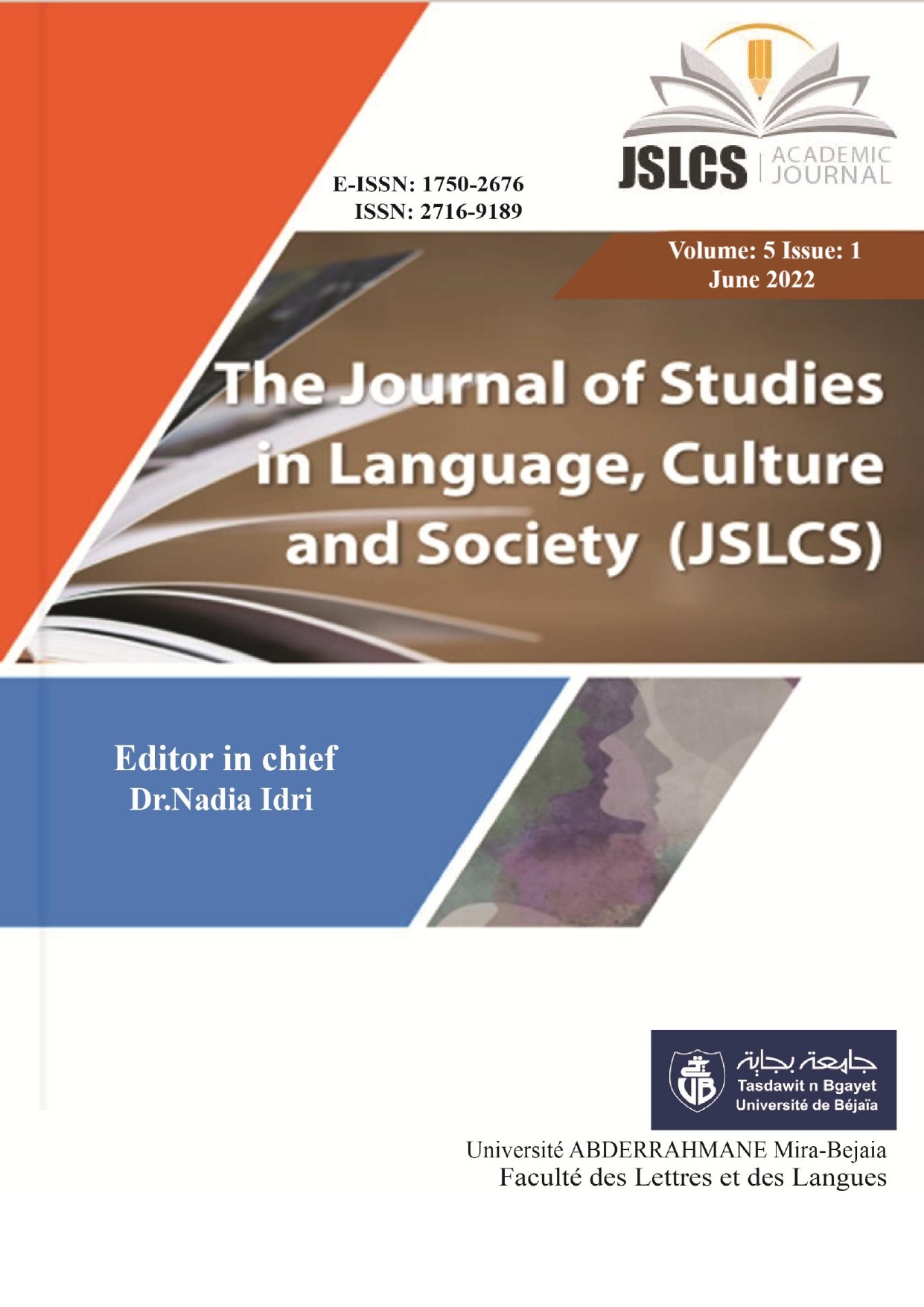The Relationship Between Statistics Anxiety And The Efl Students’ Avoidance Of Quantitative Research: Case Of Postgraduate Students Of English, At The University Of Bejaia
Keywords:
Statistics Anxiety, Academic Research, EFL students, Quantitative Research, AvoidanceAbstract
Academic research focuses essentially on empirical processes when investigating educational phenomena as it provides credible and reliable results. On another side, statistics in social sciences and educational research have become the major issue of different research works. Regarding the importance of statistics, different disciplines emphasize the indispensability of integrating it into educational curricula. The majority of EFL students come from non-scientific disciplines and their attitudes towards scientific subjects-and particularly towards mathematics and statistics- are mostly negative. These negative attitudes create a kind of willingness to its avoidance because of uneasiness, stress and anxiety when studying statistics. Therefore in this study, the researcher tries to describe how stress towards statistics pushes students to avoid using quantitative methods and tools. To reach this aim, the procedures of an exploratory design were followed; in order to evaluate students’ attitudes towards research, a questionnaire is employed. Furthermore, a modified version of Papanastasiou’s Attitudes Toward Research (ATR) scale is used to measure the participants’ attitudes towards quantitative research on 5 point scale. Finally, Cruise’s et al. (1985) Statistics Anxiety Rating Scale (STARS) is utilized to define the factors leading to statistics anxiety and to check the correlation between quantitative research avoidance and statistics anxiety. The results show that there is a significant positive correlation between statistics’ anxiety and students’ reluctance towards the use of quantitative research procedures in their research studies.
References
Agresti, A. & Finlay, B. (1997). Statistical methods for the social sciences (3rd Ed). Upper Saddle River, Prentice Hall.
Akyürek, E. & Afacan, Ö. (2018). Problems encountered during the scientific research process in graduate education: the institute of educational sciences. Published by Canadian Center of Science and Education: Higher Education Studies; 8(2).
Baloğlu, M. & Zelhart, P.E. (2003). Statistical anxiety: A detailed review of the literature. In Psychology and Education, 40, 1-15.
Dörnyei, Z. (2007). Research methods in applied linguistics: Quantitative, qualitative, and mixed methodologies. Oxford University Press.
Garfield, J. (1995). How students learn statistics. International Statistical Review, 63 (1), 2534.
Ghani, F., & Maat, S. (2018). Anxiety and achievement in statistics: A systematic review on quantitative studies. Creative Education, 9, 2280-2290.
Hanna, D., Shevlin, M., & Dempster, M. (2008). The structure of the statistics anxiety rating Scale: A confirmatory factor analysis using UK psychology students. Personality and Individual Differences, 45(1), 65-74.
Kothari, C.R. (2004). Research methodology: Methods & techniques (2nd Revised Edition). New Age International Publishers.
Keeley, J. Zyac, R., & Correia, C. (2008). Curvilinear relationships between statistics anxiety and performance among undergraduate students: evidence for optimal anxiety. Statistics Education Research Journal, 7(1), 4-15,
Macher, D., Papousek, I.,Ruggeri, K., & Paechter, M. (2015). Statistics anxiety and performance: blessings in disguise. Frontiers in Psychology. 6(1116) https://www.frontiersin.org/articles/10.3389/fpsyg.2015.01116/full
Madan, C. R. & Teitge, B. D. (2013). The benefits of undergraduate research: the student’s perspective. The Mentor: An Academic Advising Journal. https://www.researchgate.net/profile/Christopher-
Madan/publication/256269033_The_Benefits_of_Undergraduate_Research_The_Stude nt's_Perspective/links/00b7d5220d62626534000000/The-Benefits-of-UndergraduateResearch-The-Students-Perspective.pdf
Papanastasiou, E. C. (2006). Anxiety in Undergraduate Research Methods Courses: Its Nature and Implications. Paper presented at the annual meeting of the American Educational Research Association, San Francisco, CA, April 2006. https://files.eric.ed.gov/fulltext/ED494969.pdf
Qasem, F. A. A., & M. Zayid, E.I. (2019). The challenges and problems faced by students in the early stage of writing research projects in L2, University of Bisha, Saudi Arabia. European Journal of Special Education Research. 4(1); 32-47.
Shafer, D. S. & Zhang, Z. (2012). Beginning Statistics: v.1.0.
https://2012books.lardbucket.org/pdfs/beginning-statistics.pdf
Perry, Jr. F. L. (2005). Research in Applied Linguistics: Becoming a Discerning Consumer. Lawrence Erlbaum Associates Publishers.
Tutkun, T. (2019). Statistics anxiety of graduate students. International Journal of Progressive Education, 15(5); 32-41.
Uttl, B., & Smibert, D. (2017). Student evaluations of teaching: Teaching quantitative courses can be hazardous to one’s career. Peerj, 5. doi:10.7717/peerj.3299. https://www.ncbi.nlm.nih.gov/pmc/articles/PMC5426349/
Uttl, B., White, C., & Morin, A. (2013). The numbers tell it all: students don't like numbers!. Plos ONE, 8(12).
https://journals.plos.org/plosone/article?id=10.1371/journal.pone.0083443
Varalakshmi, V., Suseela, N., Sundaram, G. G., Ezhilarasi, S. & Indrani, B. (2004). Statistics: Higher Secondary– First Year. TAMILNADU Textbook Corporation: Chennai: India. http://www.worldcolleges.info/sites/default/files/schoolbooks/Std11-Stat-EM.pdf
Vigil-Colet, A. Lorenzo-Seva, U., & Condon, L. (2008). Development and validation of the statistical anxiety scale. Psicothema. 20(1), 174-180.
Walliman, N. (2011). Research Methods: The Basics. Routledge.








